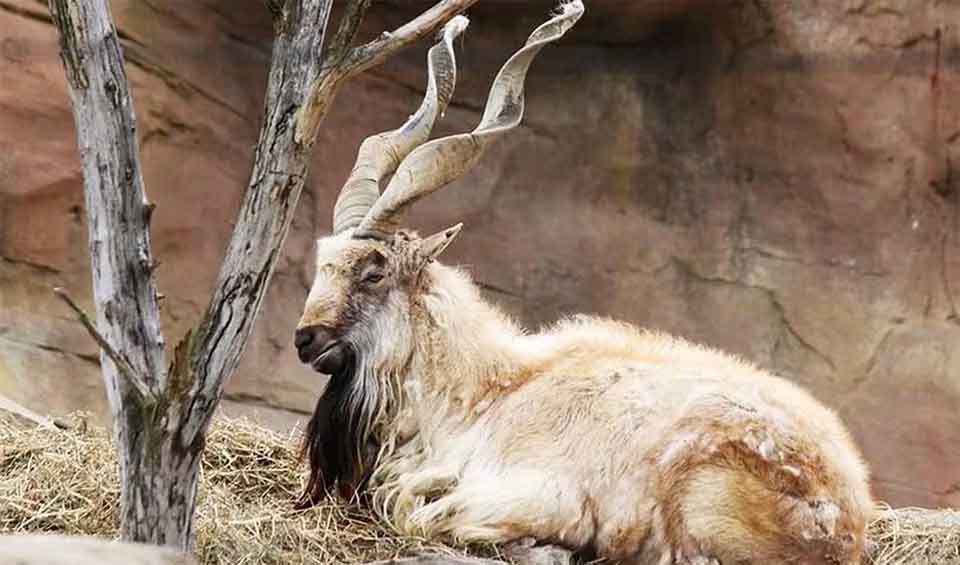A majestic symbol of resilience and adaptability, it stands as one of nature’s most remarkable climbers, thriving in the steep terrains of central Asia’s mountains, hills, and rocky peaks. This large wild goat, characterized by its distinctive and impressive twisted spiral horns, which resemble the coiled body of a serpent, derives its name from the Persian words ‘mar’ meaning snake, and ‘khor’ meaning eater, leading to the moniker “snake eater” or “snake killer.” Though the name suggests a diet that includes snakes, it is largely symbolic, referring to the markhor’s horns rather than its dietary habits.
Native to the rugged mountainous regions spanning from northern Pakistan through northern India, southern Tajikistan, southern Uzbekistan, and into Afghanistan, the markhor has evolved to navigate the steep and uneven terrains with astonishing ease. Its powerful and flexible hooves with large, hard outer edges and softer centers provide the perfect grip on rocky surfaces, enabling it to scale sheer cliffs and escape predators with a grace that belies its size.
The markhor plays a crucial role in its ecosystem, contributing to the health of mountainous habitats by controlling the growth of certain vegetation. This prevents overgrazing and promotes biodiversity by allowing a range of plant species to flourish. As Pakistan’s national animal, the markhor holds significant cultural and symbolic value, representing the spirit of the wild and the beauty of the country’s natural heritage.
Despite its majesty and ecological importance, the markhor has faced numerous threats to its survival. Over the past century, unsustainable hunting for sport, meat, and purported medicinal properties of its body parts has driven the markhor to the brink of extinction. The majestic horns of the markhor, highly prized as trophies, have made them a target for poachers, further exacerbating their decline.
Distribution
 Afghanistan
Afghanistan India
India Pakistan
Pakistan Tajikistan
Tajikistan Turkmenistan
Turkmenistan Uzbekistan
UzbekistanAnything we've missed?
Help us improve this page by suggesting edits. Glory never dies!
Suggest an editGet to know me
Terrestrial / Aquatic
Altricial / Precocial
Polygamous / Monogamous
Dimorphic (size) / Monomorphic
Active: Diurnal / Nocturnal
Social behavior: Solitary / Pack / Herd
Diet: Carnivore / Herbivore / Omnivore / Piscivorous / Insectivore
Migratory: Yes / No
Domesticated: Yes / No
Dangerous: Yes / No




